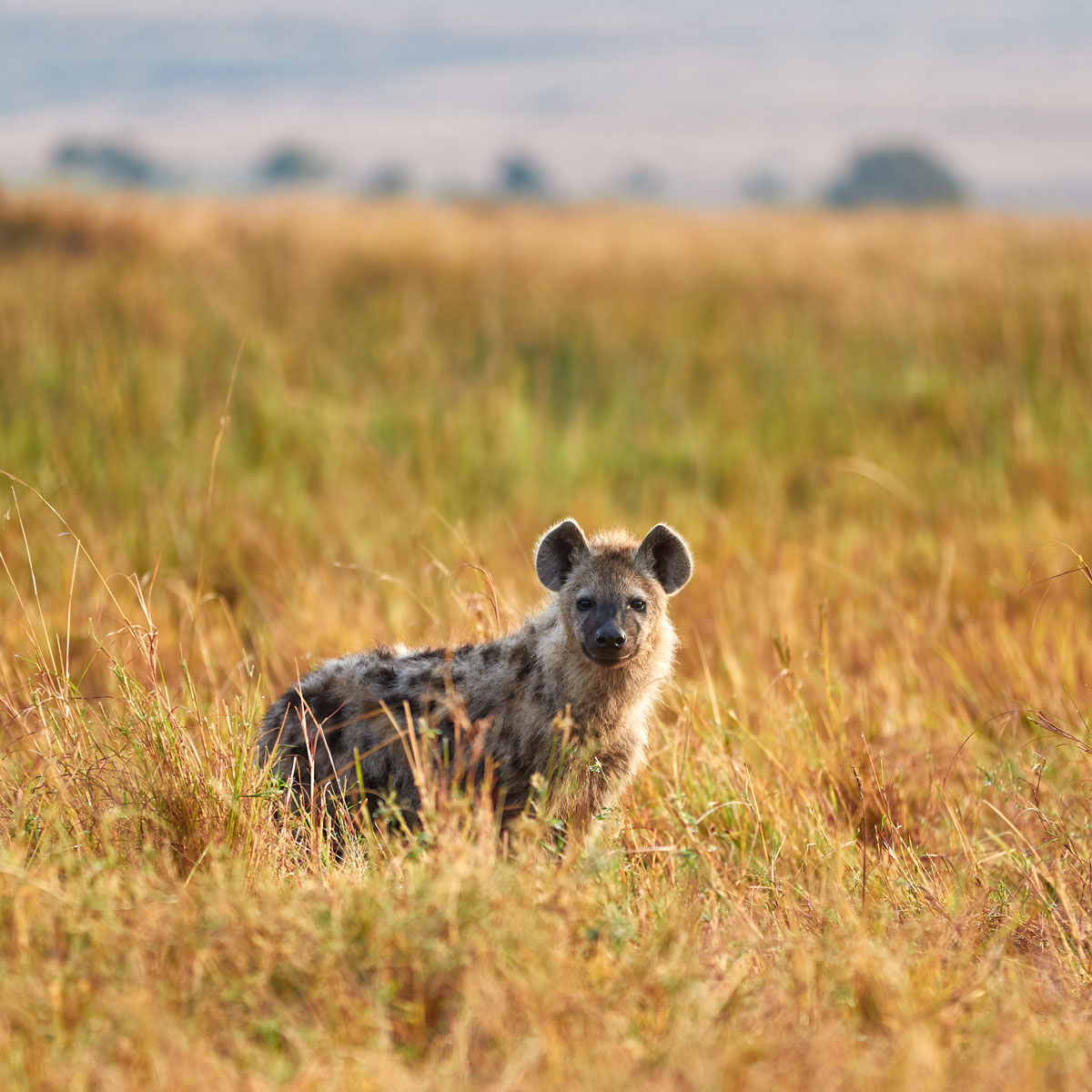
For people near the Kenyan city of Nakuru, an area popular for wildlife tourism due to its proximity to the Soysambu Conservancy and Lake Nakuru National Park, one species—the spotted hyena—stands out. While four hyena species roam through parts of Africa, the spotted hyena is the most abundant large carnivore and one that has quickly adapted to living alongside humans.
“When you are interviewing people here, asking them about their experiences of conflict, hyenas come out on top in almost every conversation that you have,” postdoctoral researcher Christine Wilkinson, PhD ’21 Environmental Science, Policy, and Management, recently told National Geographic. Ecologists like Wilkinson have studied spotted hyenas for decades, upending our understanding of who rules the wild kingdom—and how they do it—with every new finding.
One of Wilkinson’s recent studies, which involved attaching GPS collars to seven hyenas and reviewing thousands of camera-trap images, showed that hyenas regularly leave the fully enclosed Lake Nakuru National Park at night and head toward neighboring communities to eat butchers’ scraps and carcass waste. They also occasionally kill and eat livestock not held in predator-proof enclosures, then return to the safety of the park in the morning.
Wilkinson’s fieldwork also revealed how the hyenas deftly tackle roadblocks, such as finding workarounds in fences that people rely on to keep them out. Some hyenas were also observed dismantling fence repairs, often opening the same hole park rangers previously repaired.
Learn more about spotted hyenas and see photos captured by Jen Guyton, BS '10 Conservation and Resource Studies, at the National Geographic website.
